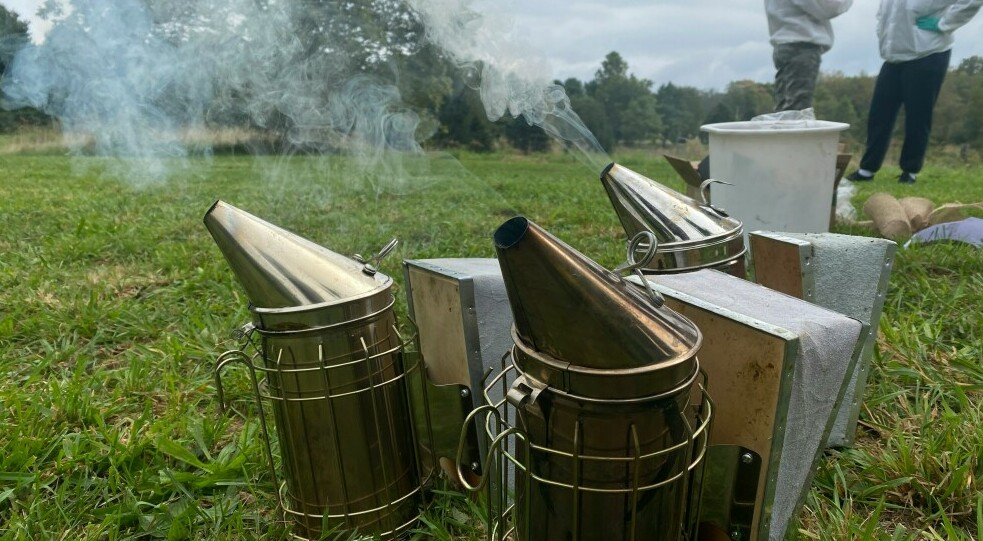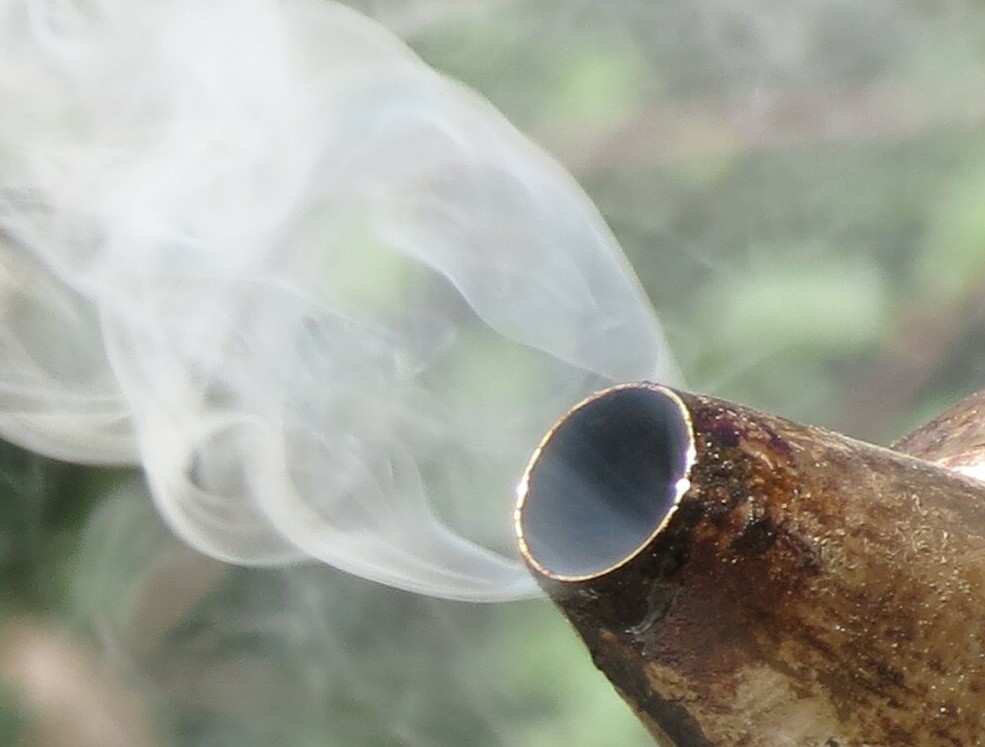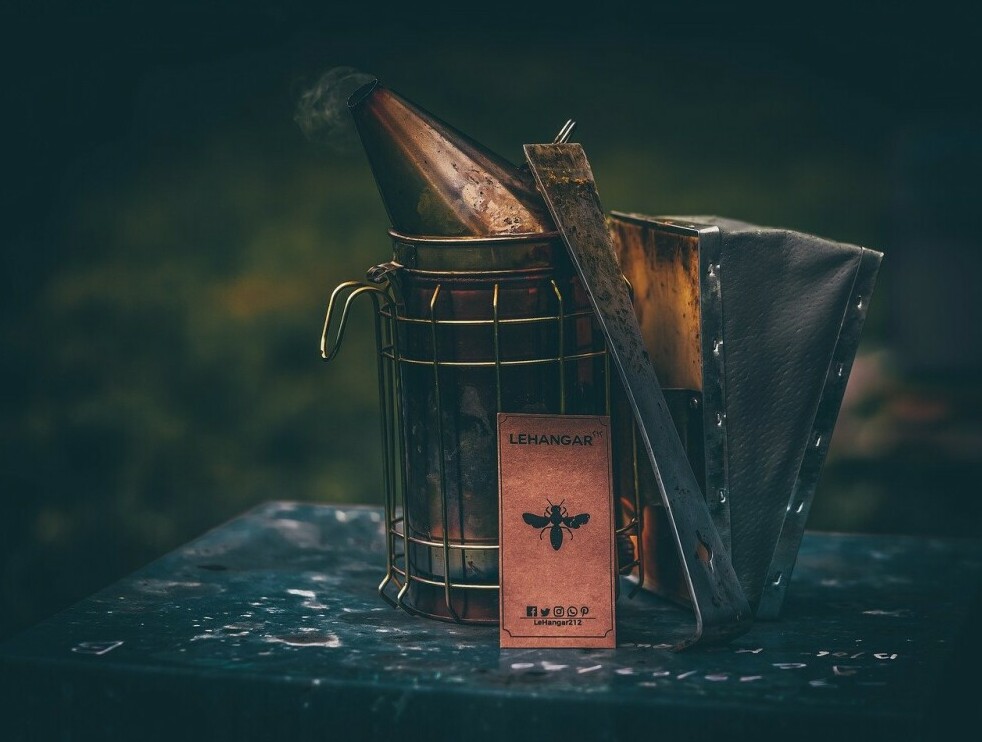Beekeeping, known as apiculture, isn’t just a hobby for many; it’s a vital part of agriculture. Beyond the honey, bees play a crucial role in pollination, which affects our food supply. In this world of buzzing productivity, smokers are an essential tool and not just a bad habit to kick.
Historically, the concept of using smoke dates back centuries. Ancient texts and artworks show beekeepers utilizing smoke to manage bees, suggesting it’s been a tried-and-tested method over the ages. But why smoke? What’s the magic behind it?
In modern beekeeping, a smoker is indispensable. It’s a straightforward device—a canister with bellows—that allows beekeepers to generate smoke and direct it into the hive. The smoke plays a key role in calming the bees, making it easier for beekeepers to do their job without causing too much stress to these vital insects.
Smoke interference disrupts bees’ communication. When faced with smoke, bees think there might be a fire and begin to consume honey to prepare for possible hive evacuation. This keeps them occupied and less likely to sting. Plus, smoke masks alarm pheromones, further lowering aggression levels.
For those thinking about venturing into beekeeping, understanding the role of a smoker in hive management is crucial. It’s not just about protection from stings; it’s about ensuring the wellbeing of the colony and making the beekeeping process smoother.

Mechanics of a Bee Smoker: How Does It Work?
A bee smoker is a relatively simple yet ingenious tool. It mainly consists of three parts: the canister, the bellows, and the nozzle. The canister is where the fuel goes, creating the smoke. The bellows, usually made of leather or rubber, pump air into the canister to keep the fire lit and generate more smoke. The nozzle directs the smoke into the hive with precision, ensuring it reaches the bees without wasting much.
Lighting the smoker can be a bit of an art. Start by placing a small amount of fuel like dried leaves or pine needles at the bottom of the canister. Light the fuel and give the bellows a few quick squeezes to get the flame going. Once the fire is stable, add more fuel gradually—wood chips or cardboard work well. This will create a cool, thick smoke perfect for calming the bees.

Different fuels can produce varying results. Natural materials like burlap, pine needles, and dried herbs offer benefits. Burlap burns slowly, providing more extended smoke sessions. Pine needles give off a pleasant aroma and consistent smoke. Dried herbs can have calming properties, making bees even more docile. Experimenting with these can help you find the best fuel for your needs.
Maintaining the smoker isn’t complicated but it’s crucial for its longevity. Regularly clean out ash and soot buildup to ensure proper airflow. Check the bellows frequently for any holes or cracks, as leaks can diminish smoke production. Also, store the smoker in a dry place to prevent rust and wear.
Effective use of a bee smoker involves not just lighting it but also knowing how to handle it. Direct short puffs of smoke at the hive entrance and under the lid before opening it. This initial dose calms the bees and masks alarm pheromones, making the hive easier to manage.
The Science Behind Smokers: Why Do They Work?
Smoke has a fascinating effect on bees, serving both practical and scientific purposes. One of the main reasons smoke works so well in bee management is its impact on the bees’ central nervous system. When bees detect smoke, it triggers a survival instinct. Their immediate response is to gorge on honey in preparation for a potential need to abandon the hive. This behavior makes them less aggressive and more focused on internal activities.
When bees sense smoke, they interpret it as a threat of fire. This triggers them to consume as much honey as possible—think of it as their form of emergency planning. A full stomach makes bees less inclined to sting, as their primary focus shifts to the hive’s potential evacuation.
Additionally, smoke interferes with the bees’ primary way of communication. Bees use pheromones to signal danger to the rest of the colony. Smoke masks these alarm pheromones, essentially ‘jamming’ their communication system and reducing the likelihood of aggressive behavior. This masking effect is crucial as it prevents the bees from going into a defensive frenzy when beekeepers inspect the hive.

Scientific research supports these observations. Studies have shown that bees exposed to smoke exhibit reduced aggression and lower levels of stress hormones. The calming effect of smoke allows for smoother hive inspections and less chaotic bee behavior.
In essence, the success of a bee smoker lies in its ability to manipulate bee behavior temporarily. By understanding these mechanisms, beekeepers can better manage their hives and ensure the wellbeing of their bee colonies.
Practical Tips for Using Smokers in Beekeeping
Using a smoker doesn’t just involve lighting it up and puffing smoke into the hive. Proper technique and safety measures can make all the difference. First, ensure you’re using the right amount of smoke. Too little, and the bees won’t be sufficiently calm; too much, and it might overwhelm the colony. A few puffs at the entrance and a couple under the lid should generally do the trick.
Always approach the hive calmly and gently. Sudden movements can alarm the bees, even with smoke. Hold the smoker about a foot away from the hive entrance when releasing the smoke to avoid directing hot embers towards the bees. Remember, the aim is to calm, not to cook them!
Common mistakes include over-smoking or not giving the smoker enough time to generate steady smoke. Another pitfall is using damp or inappropriate fuel, which can produce harsh smoke or none at all. If the smoker goes out during an inspection, it’s a good idea to step back, relight it, and then continue. Consistent practice will make these steps second nature.

Maintaining your smoker is just as important as using it correctly. After each use, empty out the ashes to prevent buildup and ensure proper airflow. Check bellows for any damage regularly, as leaks can compromise smoke production. Storing the smoker in a cool, dry place will extend its lifespan. A well-maintained smoker is a reliable companion in beekeeping.
By mastering these practical tips and techniques, you can ensure smoother hive inspections and happier bees. A well-used smoker not only protects you from stings but also ensures that the bees remain calm and productive.

2 comments on “Smokers: How They Work And Why Beekeepers Use Them”
David
August 21, 2024 at 9:02 amThat’s so interesting about how the smoke works! I’d never really thought about it until recently when I started getting interested in beekeeping. It’s surprising that it actually calms bees down—if my home started filling up with smoke, I’d be panicking big time! I do worry a bit about the bees, though. I know they probably don’t have lungs, but I can’t help but think about how the smoke might affect them in the long run.
Thanks for sharing this—definitely gave me something to think about as I continue learning about beekeeping!
Randi
August 23, 2024 at 2:35 amGlad you found it interesting! It’s crazy how smoke calms them down, right? The smoke masks their alarm signals, so they stay relaxed. I get your concern, but it’s used carefully to avoid harm. Keep exploring beekeeping—there’s so much to learn! 🐝